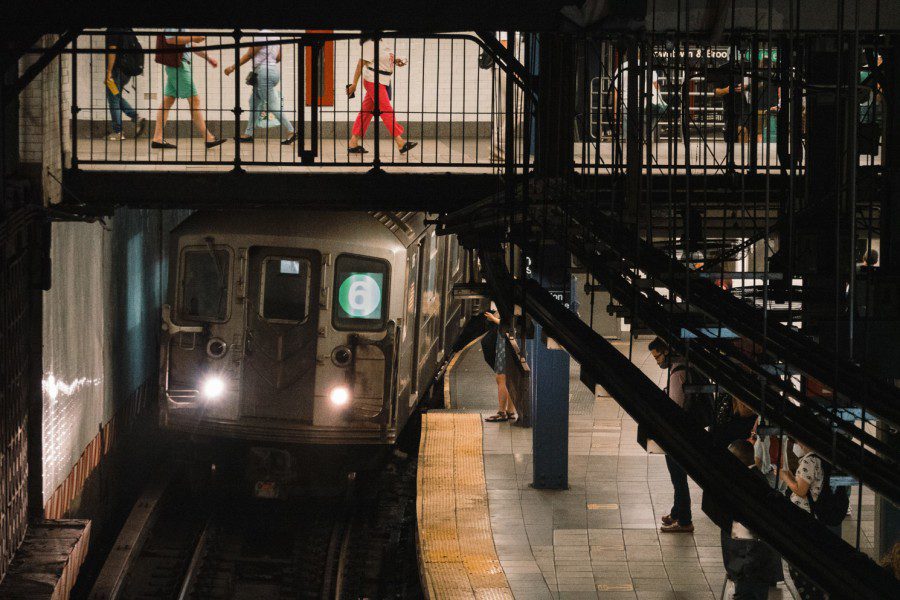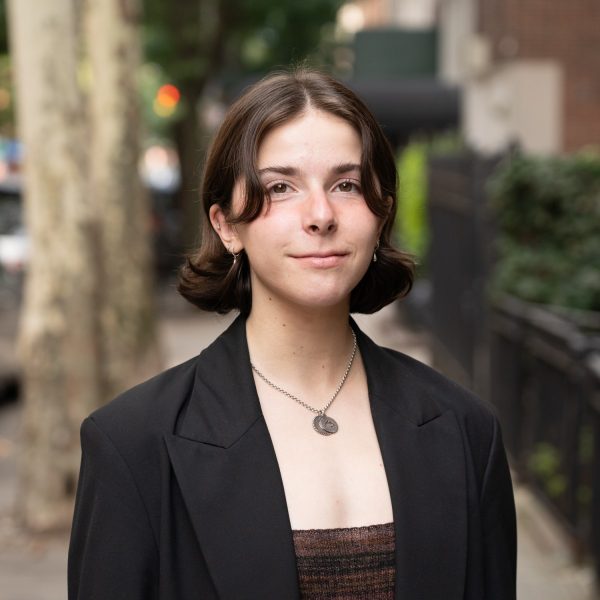Latest subway safety plan puts more police in stations
With an intent of cracking down on crime, Mayor Eric Adams and Gov. Kathy Hochul plan to increase police presence and mental health services in the system’s cars and stations.
A train arrives at the Union Square subway station. (Kevin Wu for WSN)
October 24, 2022
More police officers are coming to New York City subway stations after Mayor Eric Adams and Gov. Kathy Hochul announced a plan to add 1,200 overtime shifts across over 300 stations for transit patrol on Saturday, Oct. 22.
Along with the increased police presence, the “Cops, Cameras, and Care” plan will increase intervention training for police and first responders. There will also be a substantial increase of officers at turnstiles, which Adams and Hochul said will help enforce the law and deter fare evasion. Train conductors will be instructed to announce police presence in stations and on platforms.
The plan was announced after a string of recent deaths and violent incidents in subway stations. NYU sophomore Ev Meeker said she thinks police are not always helpful in deterring subway crime, and instead takes measures to keep herself safe when riding trains.
“The police being around — for at least some of us — creates a sense of safety, but the point of police is that we shouldn’t necessarily feel their presence,” Meeker said. “They should be there if they need to do something, but when they’re just hanging out in a little club, it’s reiterating their weird dominance.”
Lee Zeldin, the Republican nominee for governor in the upcoming New York state election, claimed that Hochul’s announcement of the plan was a reaction to a recent poll by a conservative media company, which placed Zeldin one point ahead of Hochul in the governor’s race. Polling data from multiple polls averaged by FiveThirtyEight showed Hochul leading by 7.4 points at press time, though her lead over Zeldin has been narrowing for weeks.
“For Kathy Hochul, it wasn’t the nine subway deaths that drove her to action,” Zeldin said in a press statement. “It wasn’t a 25-year high in subway crime. It wasn’t New Yorkers feeling unsafe on our streets, on our subways and in their homes. For Kathy Hochul, all it took for her to announce a half-ass, day late, dollar-short plan was a bad poll.”
Adams has attempted to increase police presence in subway stations in recent months. After an incident in which a man injured at least a dozen subway riders in April, Adams committed to doubling the number of officers in subway stations.
In September, Hochul also announced that two cameras will be installed in every subway car, totalling to around 5,400 additional cameras in 2,700 subway cars. NYU first-year Justine Smith said that she thinks that the cameras are being added to deter subway riders from committing crime, but that they will not be effective in stopping those that do.
“It’s not really going to help because things are going to happen, and then they’re going to leave,” Smith said. “It’s just like, ‘OK, now we have a video.’ Somebody could have done that on their phone — they just want to watch people.”
Hochul and Adams said that the city will also provide additional transition services — temporary housing and recovery assistance — for unhoused individuals. New York state is required to admit unhoused individuals into shelters upon request, but many have said that they feel unsafe in shelters, instead preferring to stay in parks or on city sidewalks.
West Harlem resident Brandon Vescovo, who regularly takes the subway to work and has lived in the city for 10 years, said that a better way to reduce crime in subway stations would be to dedicate more resources toward helping unhoused people and address mental health and drug-related problems.
“What police do is that they react to crime, they do not prevent crime — this is just a matter of simple A-to-B logic,” Vescovo said. “You can throw as many cops in a situation as you’d like. Whether it’s the subway or in the city, more police does not equal more safety.”
Contact Carmo Moniz and Lauren Ashe at [email protected].




























































































































































